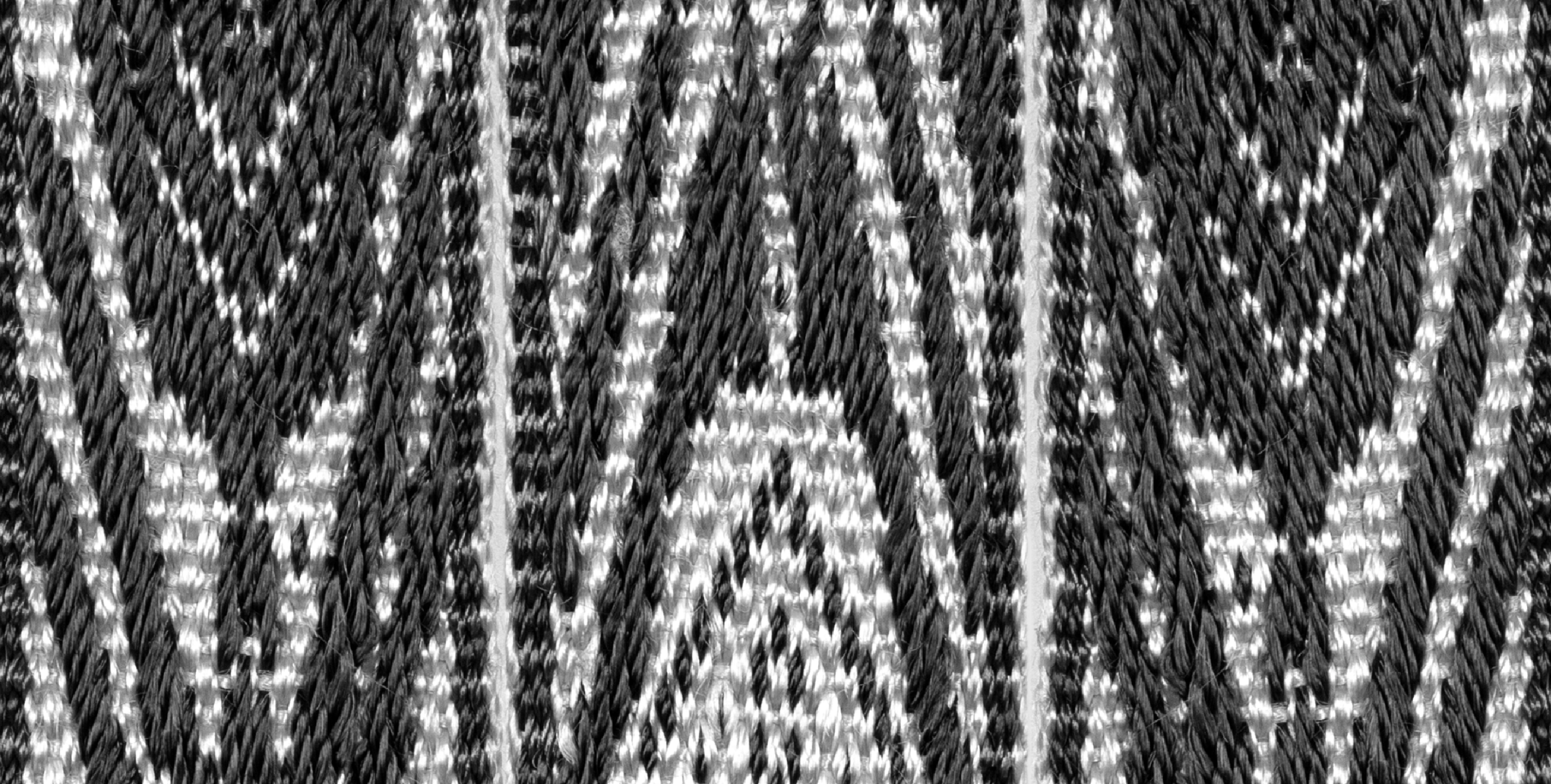Nacionalinis M. K. Čiurlionio dailės muziejus
V. Putvinskio st. 55, LT-44248 Kaunas
Institution code 190755932
An interesting chat between two young ladies was overheard in Kaunas in 1927 by a spouse of the artist and art historian Ignas Šlapelis Laura Karužaitė-Šlapelienė: “On Sunday morning last summer, a carriage brought to church a group of villagers, one woman among them looked especially unstylish, her skirt was hand-woven (at first sight, it was green, but when she moved, the colour changed into yellow, then acquired a pink shade, as though it were the most costly silk), the apron did not resemble an ordinary pearl of a motley fabric, rather a garment with tulip patterns shining from afar. Her white blouse of thin canvas was adorned with red embroided ornaments. Upon entering the church, the woman took a position next to two town girls who started whispering: “If I had such a skirt, I would immediately tear it down and cover our couch at home. It would look wonderful. I would also make a few colourful pillows. And here‘s – a truly original decoration!” Another girl also expressed her point of view: “As for me, I would make a tablecloth out of that skirt and embroider the edges with tulip patterns as the ones on her apron. That would look just wonderful!" Indeed, the urban ladies knew the value of nice objects.“
Actually, this exhibition is a true manifestation of how the culture of the interwar city and a high-spirited rural tradition had intertwined to shape a harmonious and natural whole. It is also a proof of how the two phenomena had supplemented each other to become a distinctive feature of the period.
The provisional capital of the State of Lithuania since 1919, Kaunas developed rapidly and from a provincial town became a strong economic, political and cultural centre of Lithuania. En masse, young people were coming from villages to Kaunas to study and work. The urban way of life radically changed the peasant consciousness. A great number of those who graduated abroad returned and voluntarily started building a young state. Close ties emerged between professional and rural culture, which, in turn, had shaped the Lithuanian national art. Following cultural influences of other countries, Kaunas gradually approximated the European mode – fashion, music, architecture and restaurants.
Kaunas had formed into a city of exceptional culture – very much Lithuanian, Kaunas-like. The urban etiquette entailed the greatest respect for Lithuanian culture, the nation‘s history, historical and national flags became mandatory attributes during public holidays. Women and girls dressed in national costumes Birutė (the 1910s–1920s) on different occasions – the commencement ceremonies, weddings or public holidays. In the 1920s–1930s, a stylized national costume created by A. Tamošaitis came into fashion.
The original peasant creation gradually developed into the national craft. Art and craft workshops, unions and associations were set up throughout Lithuania. The Chamber of Agriculture organized paid courses in housekeeping, cooking, knitting, embroidery, woodwork and carpentry for girls and boys. Folk art became a representation of the city’s interior. Motifs of rural flowers and animals, embroidered tablecloths, napkins and rugs gained much popularity.
The young intelligentsia had formed a modern Kaunas-like style – when participating in parties and embassy events ladies distinguished themselves among the European representatives for their Kaunas-rural urban art deco style.










.png)




